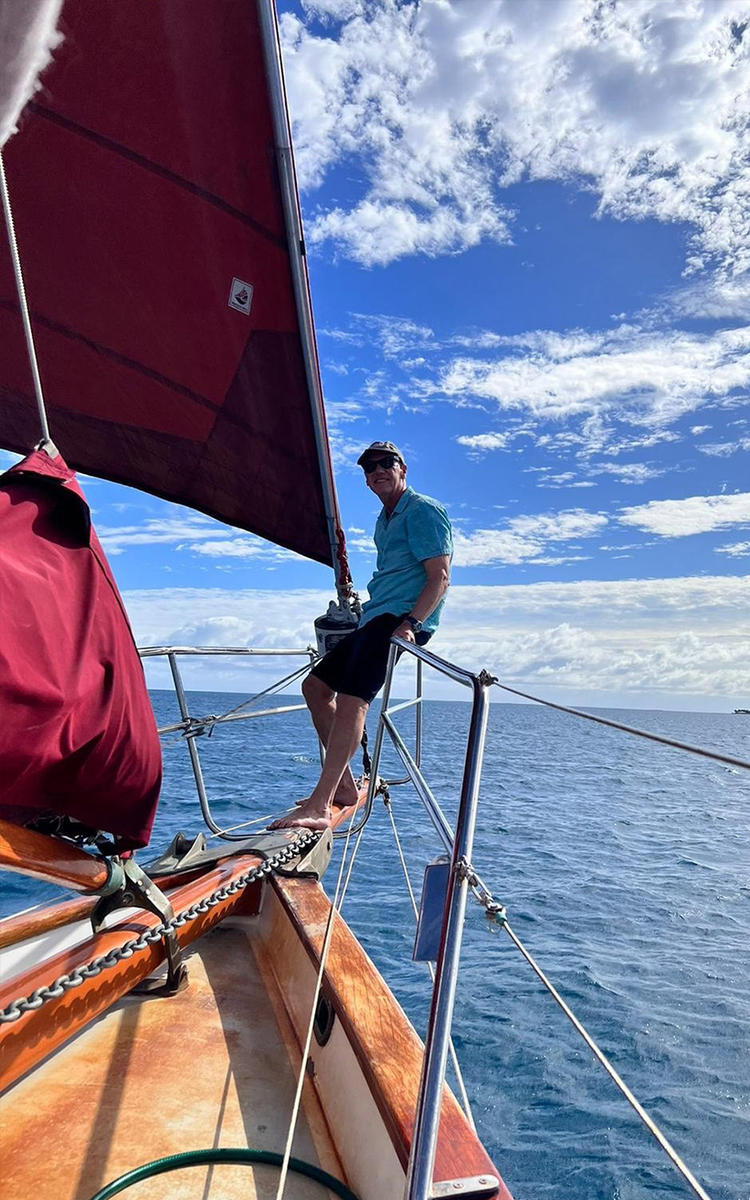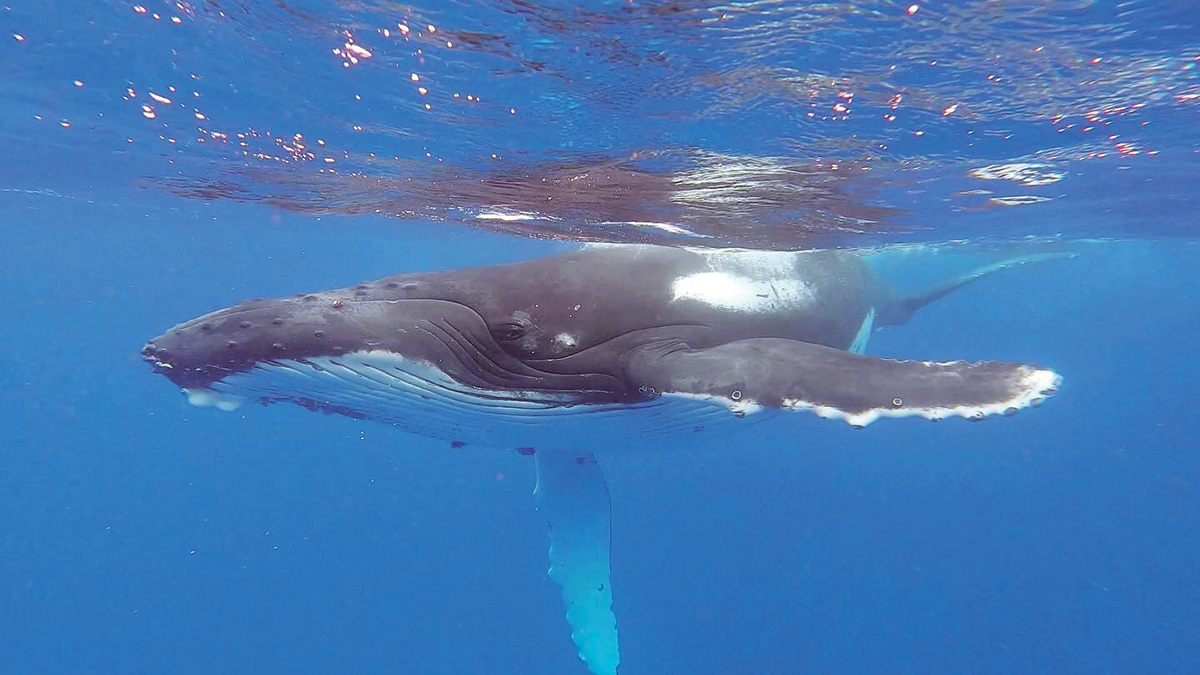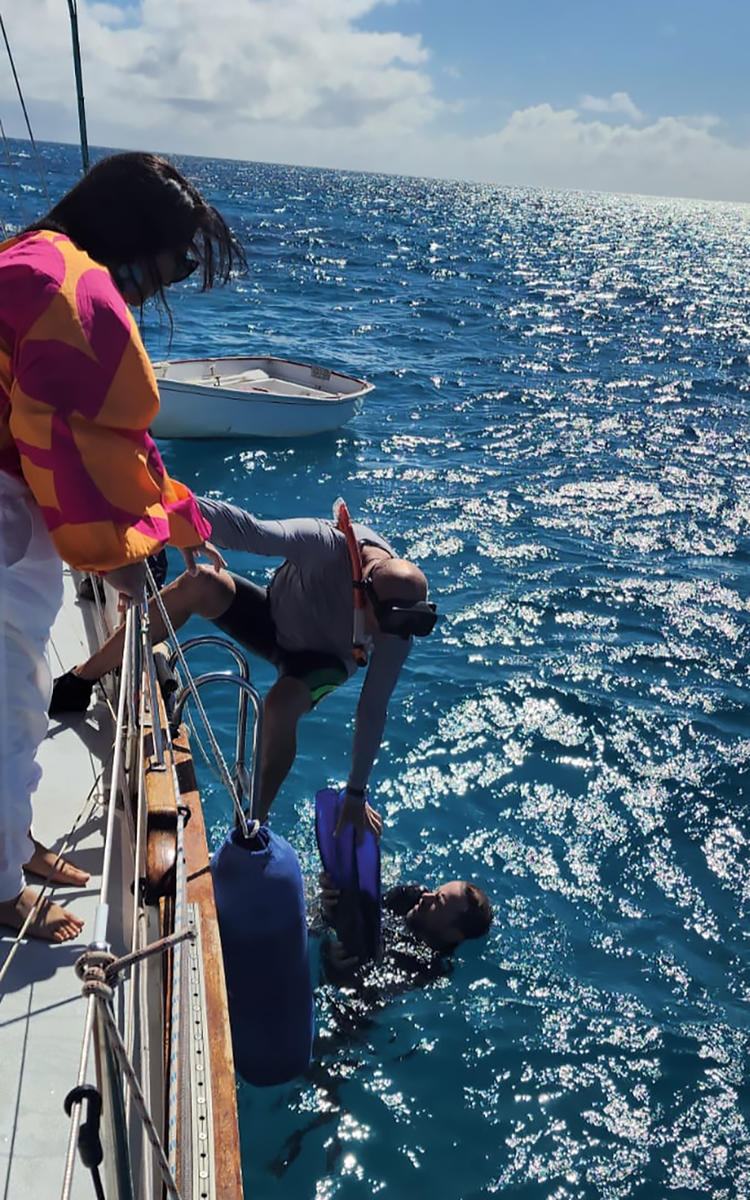Swimming with Whales in Tonga
Off-Road with the Foreign Service
BY TOM ARMBRUSTER

Whale lookout, off the northern coast of Tonga.
Bibi Voyles
Knowing the strict rules in place for whale watching in Hawaii, and the distance boats must maintain from the whales, I was a little unsure about swimming with them in Tonga. My plan was to see how respectful the crews were toward the whales and make a game-time decision. I did not want to disturb whales wintering in Tonga (to give birth and rest) after spending their austral summer in Antarctica.
One of six South Pacific humpback populations, the “Tongan Tribe” doesn’t mix with the humpbacks in Hawaii and are among the last whales to be hunted (although they were among the most affected by commercial whaling after World War II). They can grow to 60 feet long and weigh 35-50 tons. According to the Marine Mammal Center, less than 10 percent of the original humpback population remains worldwide.
At the time, my day job involved assisting on the opening of the U.S. embassy in Nuku`alofa. A Saturday on the water sounded like a good escape from looking for official residences, fielding consular questions, and advising Washington on plans for the Secretary of State Grand Opening of this new embassy.
There were eight of us that day, many from the British High Commission, a few Kiwi tourists, and me. I had already seen turtles, rays, sea snakes, and sharks in the Tongan waters while snorkeling or on boats, but the prospect of seeing whales in their environment was thrilling. Tonga is one of the few countries where along with watching whales, you can jump into the water with them accompanied by a qualified Tongan guide.
Whales 9 o’clock!
“Group 1, gear up!”
Snorkels were donned, flippers strapped on, and shorty wetsuits zipped.
“Well,” I thought, “Group 1 will get a good look.”
They were dropped off a short swim from the whales, jumping off the stern and making their way, with their guide, Tomasi, in the lead. They came back laughing and chattering and checking their waterproof cameras.

First encounter.
Bryan Armbruster

Author (at left) and Tongan guide Uili Lousi on deck.
Bibi Voyles
“Group 2, get ready!”
We had repositioned the boat and were close. Tomasi had given us a good briefing. Whale swimming is done on the whales’ terms. If they want to engage, they will. If they don’t, one powerful downstroke of their tail and they’re gone. Tomasi knew the whales after years of studying their behavior on the surface and beneath it. He said the whales recognized boats by the engine noise and showed favorites.
“Group 2! Now! Go!”
We were off! The whale closest to me was horizontal in the water. He rolled 45 degrees, slowly, to look me over. Not just from my fins to my snorkel—but through the mask. The whale made eye contact. I can only imagine my eyes were the size of saucers.
Innocence, peace, and a benign presence was what the whale communicated. I hope I communicated awe and gratitude.
Then, the whale got playful. Just like a dog gets the “zoomies,” the whale took off, circled around, and made several more passes at us. I retreated toward the boat ladder to make sure I was out of the way and watched the show. Then, the whale ventured back out. That’s when it breached.
To be honest, my mask was a bit foggy, so I had the impression of a Mack truck–sized creature crashing down right in front of me, rather than a view of a whale with the fine details of its marking.
At some point, it became clear that the whales had a super awareness of the swimmers. Ever graceful, they are gentle masters of their domain. As swimmers, we get glimpses; then the visibility fails, or the whale swims out of range. Real, long-term encounters are rare.
In that encounter, I succumbed to the magic of the whales.
Tomasi said our day with the whales was as good as it gets. Even in low visibility, the whales seem to know where we are. From that first day on, I trusted them.

Closest encounter.
Uili Lousi

Coming aboard.
Kaylie Tongia / Tanoa Expeditions
The photo of the whale towering over me caused a stir in the whale-swimming community in Tonga. Some said we were too close and never should have been that near the whale. We abided by the five-meter rule, but of course the whales did not.
In that encounter, I succumbed to the magic of the whales. You can’t come out of the water unchanged by the experience.
It was also a real privilege to observe whales with Uili Lousi, an artist and climate activist. The special bond between indigenous people and whales around the world remains mysterious yet captivating. Uili is advocating for a whale sanctuary corridor to be established between Antarctica and Tonga to avoid ship strikes.
Later, at a United Nations conference on establishing a Universal Declaration of Rights for the Ocean, I was fortunate to meet famed marine biologist and oceanographer Dr. Sylvia Earle, or “Her Deepness” as fans call her. I mentioned Uili’s idea of a whale sanctuary corridor.
“Why just a corridor?” she said, gripping my forearm with both hands. “Why not the whole Southern Ocean!”
With so much threatening the marine environment, from global warming to deep-sea mining, the whales are a gentle reminder to us all that what is at stake is not just the economics of the seafood industry and the possible riches of deep-sea minerals. It is also the welfare of incredible, highly intelligent, sentient beings.
When sharing or linking to FSJ articles online, which we welcome and encourage, please be sure to cite the magazine (The Foreign Service Journal) and the month and year of publication. Please check the permissions page for further details.




